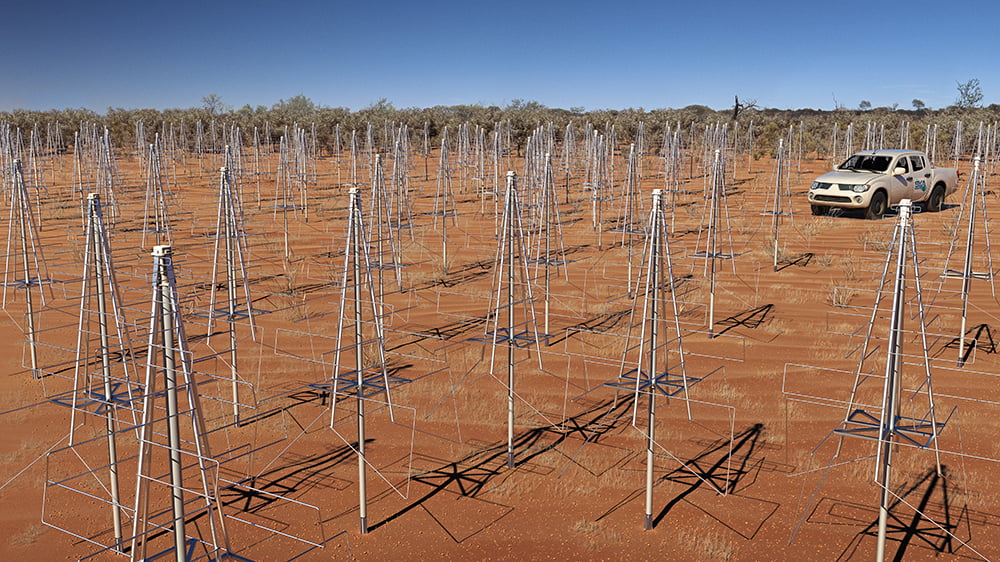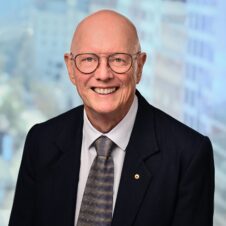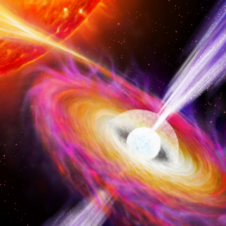
Artist’s impression of the low frequency portion of the Square Kilometre Array (SKA-low) which will be constructed in Australia. In the latter part of this decade, 250,000 of these person-height antennas will be built in Western Australia and observe the Universe at radio wavelengths. Image Credit: Swinburne Astronomy Productions/ICRAR/U. Cambridge/ASTRON.
A joint venture between Curtin University and The University of Western Australia, ICRAR was launched in 2009 with initial support for five years from the State Government and joint venture partners.
ICRAR played an important role in attracting part of the world’s biggest telescope, the Square Kilometre Array (SKA), to WA and is now considered one of the top ten radio astronomy centres in the world. As well as attracting over 50 world-leading researchers to Perth, ICRAR is now one of Australia’s largest training centres for graduate students in astronomical science and technology.
“This extended funding has come at the perfect time for ICRAR to take advantage of preparations for the Square Kilometre Array and puts us in an excellent position to ensure local WA industry benefits from worldwide investment in radio astronomy,” said ICRAR Director Professor Peter Quinn.
The new State Government funding extends ICRAR through to 2019, ensuring the State’s continued capability for Square Kilometre Array science and building on government support for radio astronomy and related sciences. Earlier this year ICRAR was also successful in receiving almost $5M as part of a $19M Federal Government funding package for SKA preparatory work.
Professor Quinn said ICRAR has already created opportunities for local industry of over $4.8M to date and that industry engagement and driving innovation were one of three priorities for the new State funding.
“With this support from the State Government, ICRAR will continue our international leadership in astronomy, new-generation radio telescope engineering, and advanced supercomputing and software systems,” said Professor Quinn.
“ICRAR will be a major part of pre-construction work for the Square Kilometre Array, building on the skill and knowledge we gained from the Murchison Widefield Array.”
The Murchison Widefield Array is the first SKA precursor telescope to complete construction and commence science operations, and is one of the major radio astronomy projects building Western Australian capacity in radio astronomy, engineering and information and communications technology.
“We are very proud of the achievements made by Curtin University staff working as part of ICRAR, particularly the Curtin-led Murchison Widefield Array and newer generation SKA verification systems. We enthusiastically support this world-class centre in conjunction with the State’s investment,” said Acting Curtin University Vice-Chancellor Professor Colin Stirling.
Professor Quinn said ICRAR intends to be involved in pre-construction work for the SKA in both the engineering and design of the WA-based low frequency antennas and the telescope’s powerful computing backend – work that can now be initiated due to this funding extension.
UWA Vice-Chancellor Professor Paul Johnson welcomed the extended WA Government funding as recognition of the importance of developing world-class science in radio astronomy and astrophysics. “The Square Kilometre Array is destined to play a historic role in advancing human knowledge of the Universe, and UWA is proud to be a leading partner in this great scientific endeavour,” Professor Johnson said.
Among ICRAR’s successes so far have been the WA Science Awards, where Director Professor Peter Quinn was named WA Scientist of the Year and Deputy Director Professor Steven Tingay won WA Science Ambassador of the Year.
Further information:
- ICRAR has an astronomy research node at both Curtin University and The University of Western Australia. ICRAR’s engineering activities are based at the Curtin node and the Information & Communications Technology research is based at the UWA node.
- ICRAR now has over 110 staff and graduate research students spread over both nodes. During the five years of extended state government funding this is estimated to grow to over 150 people.
- The State Government’s $26 investment will focus on three key areas:
-
- Growing ICRAR’s science and technology missions, including work on the Square Kilometre Array and the Murchison Widefield Array as well as science using CSIRO’s Australian SKA Pathfinder.
- Furthering ICRAR’s industrial engagement.
- Building on ICRAR’s outreach and education activities that raise the profile of science, engineering and computing in schools and communities.
- ICRAR’s planned involvement in the pre-construction period of the Square Kilometre Array (2013-2016) includes:
-
- Verification systems for the two million antenna low frequency portion of the SKA (SKA-low) that will be based in WA.
- Involvement in the design of the SKA’s correlator, the part of the telescope that combines signals from the individual antennas.
- Design of the ambitious SKA computing system.
Visual resources (vision and images) are available on DropBox.
Contacts:
Professor Peter Quinn
Director, ICRAR
Ph: +61 8 6488 4553
M: +61 414 185 052
E: peter.quinn@icrar.org
Kirsten Gottschalk
Media Contact, ICRAR
Ph: +61 8 6488 7771
M: +61 438 361 876
E: kirsten.gottschalk@icrar.org

